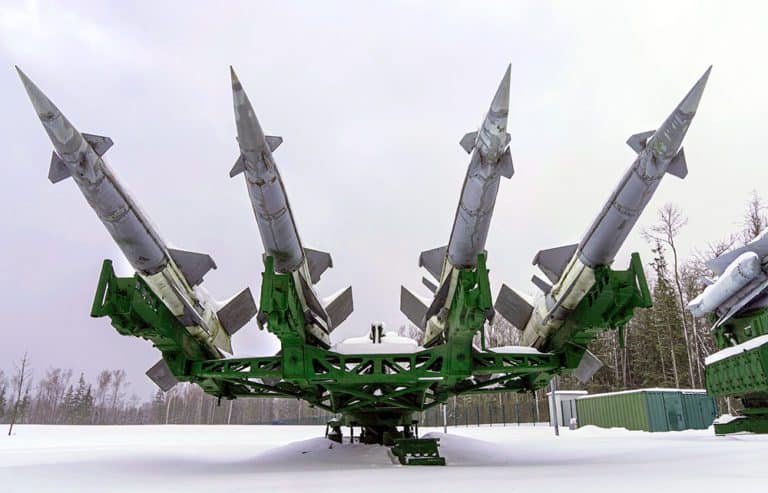In the USA It is Your Right to Own Military Weapons
Tombstone, Arizona – -(Ammoland.com)-by Jeff Knox- You might be familiar with the question-and-answer site on the internet called Quora.com. While a lot of the discussion on the site is just garbage, a question that’s worth exploring occasionally pops up. Amidst the wrangling over “military-style” weapons and such, I recently ran across a question that I think is worth answering.
The question was:
“What is the legal precedent allowing private ownership of military weapons in the United States?”
My answer:
First, “private ownership of military weapons” is not “allowed” in the US. It’s a right.
You wouldn’t say that practicing Catholicism or Judaism is “allowed” or that reading book is “allowed.” It is a right that is recognized in the US Constitution as fundamental and preexisting that document. The government can’t “allow” rights. They either recognize and respect them or don’t, which is how civil wars start.
Contrary to what President Biden keeps babbling on about cannons, the Second Amendment “right of the people to keep and bear arms” was considered comprehensive at the time of the founding. Civilians could and did own cannons, repeating rifles, and even warships armed with cannons. In his ridiculous decision in the Dred Scott case, explaining why dark-skinned people of African heritage could not be citizens, Justice Taney infamously rolled out his “parade of horribles,” saying that if African-Americans were citizens, they would be able to freely travel between states, hold political meetings, and carry arms wherever they went.
That suggests that the Supreme Court at that time recognized that the Second Amendment is the individual right of all citizens and that it was not restricted to only federal limits.
In 1934, Congress used legal sleight-of-hand to get around the prohibitions of the Second Amendment by calling restrictions on machine guns a tax measure rather than a firearm restriction law; supporters of the law were concerned about it potentially being overturned by the courts. They were looking for a perfect test case to try and slip a new law, the National Firearms Act, past the courts. They found what they were looking for in a case known as US v. Miller, in which a couple of low-life thugs had been caught for bank robbery and were additionally charged with possessing a sawed-off shotgun and transporting said short-barreled shotgun across state lines for illegal purposes. Their lawyer challenged the additional penalties for violating the NFA, which was fast-tracked to the Supreme Court in 1939. In their decision, the Court focused on the “militia clause” of the amendment, saying that any review of the amendment must consider the militia’s purpose.
That’s the part of the flawed decision that all of the lower courts latched onto for the next 70 years, but that was really just part of the dicta of the decision.
The actual meat of the ruling was that, since the Court had no evidence that a short-barreled shotgun served any purpose in the proper function of a militia, they found that such a weapon was not covered by the protections of the Second Amendment.
Often overlooked about Miller is that there was no one arguing on behalf of Miller and his accomplice. One of them was dead, and the other was serving long sentences for other crimes. No lawyer representing them or their side appeared to present any briefs or arguments. A second overlooked or intentionally missed point is that short-barreled shotguns have always had a place in military units. But here was no one to tell the Court that.
The government argued that the Second Amendment protected the “collective right” of being armed during active militia service, but the Court directly rejected that argument.
A true reading of the Miller decision suggests that the objective of having access to a properly functioning (in other words, “well regulated”) militia must be taken into account when looking at Second Amendment cases and that the amendment covers only such arms as are useful to a properly functioning militia. That would mean that ONLY military-type weapons would be covered, which, if Miller were properly read, would include machine guns, rocket-propelled grenades, and crew-served infantry weapons.
Instead of giving the Miller decision a fair reading, a lower court judge misrepresented the Court’s militia comments to mean exactly the argument that the Court had rejected about the Second Amendment referring to a “collective right.” All of the other courts jumped on that court’s misconstrued interpretation. For almost seventy years, care was taken to avoid ever sending any questionable case back up to the Supreme Court.
For most of the last century, that flawed interprtaion was the standard the courts used as “settled law” and what was taught in law schools.
In the early 1970s, a University of Arizona law student named David Hardy, stumbled on the Miller decision and recognized the incompatibility with what he was being told in his studies.
He approached his professor and was encouraged to pursue the subject to better understand what he was reading wrong in the precedents. Hardy dove deep into the case law and the history and couldn’t get around the fact that there was simply no true precedent for the prevailing attitude holding the Second Amendment to be dealing with a “collective,” not “individual,” right. He wrote an article for the Arizona Law Review explaining his findings, and that article was widely ignored as the Arizona Law Review was not a very prominent journal. Fortunately, California attorney, criminologist, and constitutional law professor Don Kates happened to read the article and thought it worth pursuing. In 1983, he wrote his own article in the Michigan Law Review, supporting Hardy’s conclusions. More people read the Michigan Law Review than the one from Arizona, and Kates’ article was noticed by a prominent law professor in Texas named Sanford Levinson. Levinson thought the article was absurd, so he and his graduate students began a research project to correct the errors of Kates and Hardy. The result was an article in the Yale Law Review titled “The Embarrassing Second Amendment,” in which Levinson lamented the fact that after thorough research, he had concluded that Kates and Hardy were indeed right.
The Second Amendment did protect a virtually unrestricted individual right to arms.
Over the next 20 years, the Supreme Court steadfastly avoided taking Second Amendment cases, and activists on both sides of the issue helped steer potential SCOTUS cases away from the Court, as neither side was confident in how the Court might rule.
Finally, in 2008, even though the NRA had tried to derail the case, fearing the Court would rule against their interests, the Court heard the case of District of Columbia v. Heller, resulting in a landmark decision. Though the case was very narrowly focused on the question of whether Dick Heller had a constitutional right to have a functional handgun in his home in DC for personal defense, the Court couldn’t help voiding the mistaken notion of a “collective right” being implied in “the right of the people to keep and bear arms, shall not be infringed.” All nine Justices agreed that the right protected was “individual” in nature, but four of the Justices argued that “shall not be infringed” somehow meant “shouldn’t be unreasonably infringed” and that the individual right to arms had to be directly connected to active service in the militia. Those four were outnumbered by the five justices who concluded that NO direct connection to active participation in the militia was necessary and that “shall not be infringed” does not imply the inclusion of the word “unreasonably.”
The Court majority opinion, written by Justice Antonin Scalia, included some dicta suggesting that the protection only applied to such arms as are in “common use” at the time and which would be normal for a person to bring with them to militia service if called upon. (In the US, all able-bodied persons above the age of 18 are automatically considered to be members of the militia, regardless of any active service.)
A few years later, in the case of McDonald v. Chicago, the Court held that the right protected by the Second Amendment is “fundamental” and applies to the states under the “Equal Protection” clause of the Fourteenth Amendment. Then, just a few months ago, the Court ruled in NYSRPA v. Bruen, in a six to three decision, that the “right to keep and bear arms” includes bearing arms for personal protection outside the home. The decision also set the standard for evaluating the application of the amendment to the actual text and its perceived meaning and application at the time it was adopted, without consideration for the “public safety” or other concerns of states or municipalities.
Under these rulings, Heller, McDonald, and NYSRPA v. Bruen, and to a lesser extent Miller, the Court has established that the Second Amendment protects an individual right to arms, inside and outside the home and that the right applies to arms that are commonly held by the populace, and that the protections apply to the federal government and all subsidiary governments, as a fundamental right.
As “military-style” arms are specifically identified as protected in the Miller decision, and as virtually all firearms have evolved from military designs, and “military-style” arms such as the AR15 and AK variants are among the most popular and common rifles in civilian hands, the matter should be considered pretty well settled.
Rights advocates are now pushing for rolling back or repealing laws like the Hughes Amendment, which cut off the sales of new, full-auto firearms back in 1986, and the National Firearms Act, which added restrictions on a wide variety of arms back in 1934.
Meanwhile, gun control advocates keep pushing new laws which are clearly unconstitutional, such as bans on so-called “assault weapons” and limits on ammunition capacity.
As Sanford Levinson wrote in his Yale Law Review article, “The Embarrassing Second Amendment,” the correct approach for those wanting to restrict firearms must begin with amending or repealing the Second Amendment.
Good luck with that.
About Jeff Knox:
Jeff Knox is a second-generation political activist and director of The Firearms Coalition. His father, Neal Knox, led many of the early gun rights battles for your right to keep and bear arms. Read Neal Knox – The Gun Rights War.




